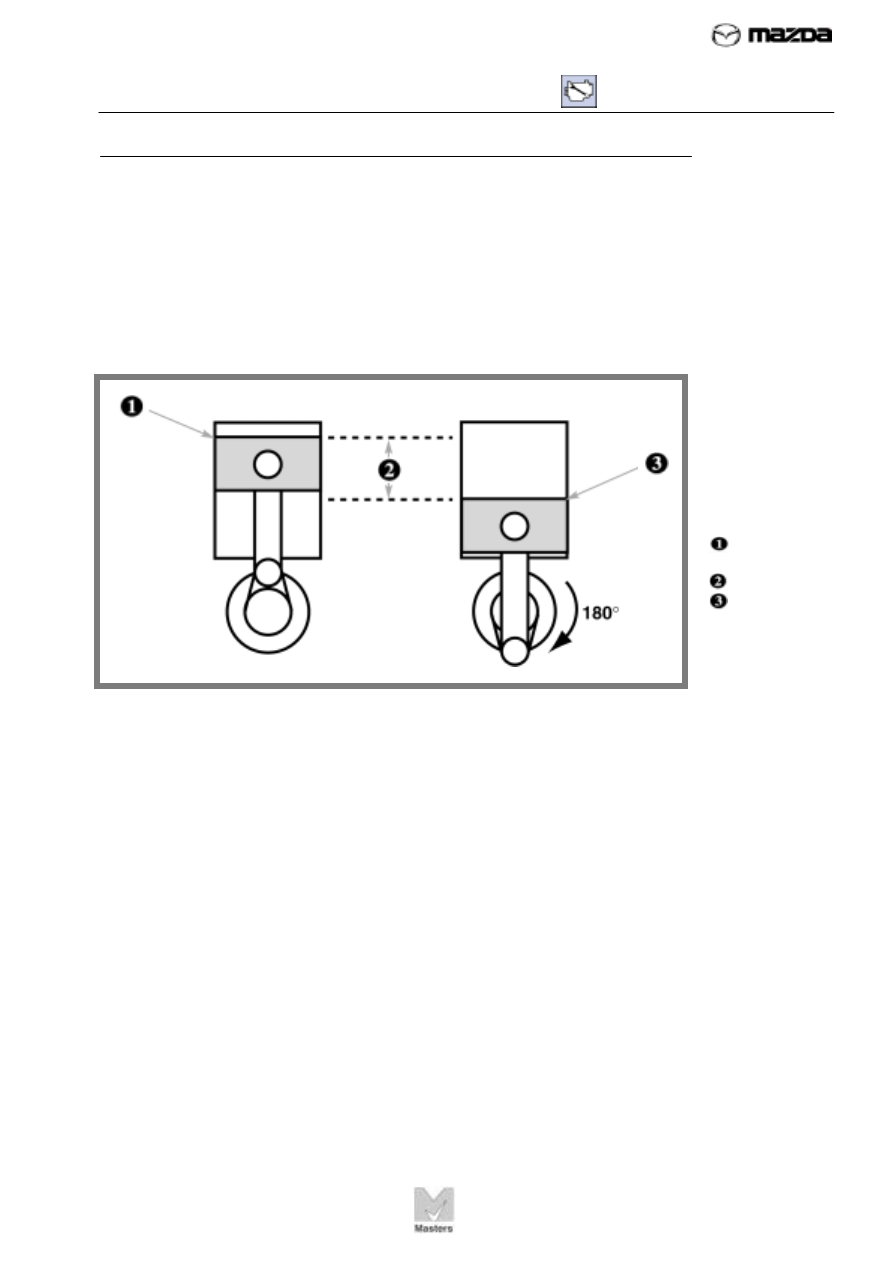Mazda Training manual - part 231

2 – BASIC OPERATION
9
Piston Engine Fundamentals
TC010-05-01S
THE FOUR-STROKE CYCLE
Most automotive engines use a four-stroke cycle to complete the
combustion process. A stroke is the movement of the piston from its
highest point in the cylinder to its lowest point, or from its lowest point to
the highest point.
The piston’s highest point in the cylinder is called top dead center, or TDC.
The lowest point is called bottom dead center, or BDC. As Figure 4 shows,
a full stroke of the piston takes one half-turn of the crankshaft, or 180
degrees.
The four-stroke cycle requires four up-and-down movements of the piston
to complete the cycle. Figure 5 shows the stages of the four-stroke cycle,
including the:
1. Intake stroke
2. Compression stroke
3. Power (combustion) stroke
4. Exhaust stroke
FIGURE 4. A stroke
is the distance a
piston travels from
top dead center to
bottom dead center,
or from bottom dead
center to top dead
center.
Top dead center
(TDC)
One stroke
Bottom dead
center (BDC)